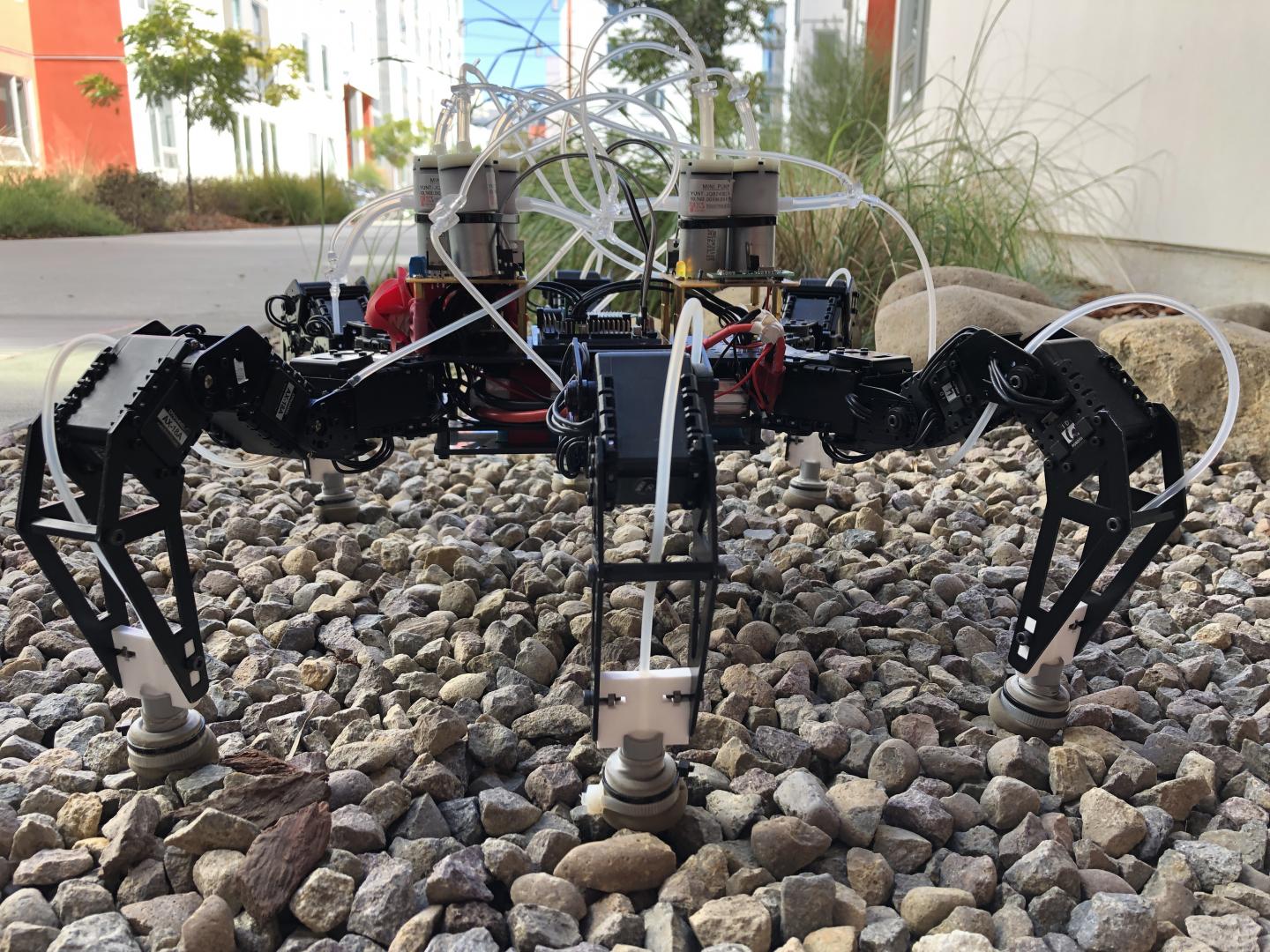Roboticists at the University of California San Diego have developed flexible feet that can help robots walk up to 40% faster on uneven terrain such as pebbles and wood chips.
It’s the first time that such feet have been tested on uneven terrain. The work has applications for search-and-rescue missions as well as space exploration.
The feet were installed on a commercially-available hexapod robot. Researchers tested the robot walking on flat ground, wood chips and pebbles–with and without the feet.
Researchers designed and built an on-board system that can generate negative pressure to control the jamming of the feet, as well as positive pressure to unlock the feet between each step.

The feet, thus, can be actively jammed with a vacuum pump removing air from between the coffee grounds. The feet can also be passively jammed, when the weight of the robot pushes the air out from between the coffee grounds inside, causing them to stiffen.
The researchers found that passive jamming feet perform best on flat ground but active jamming feet do better on loose rocks. The feet also helped the robot’s legs grip the ground better, increasing its speed. The improvements were particularly significant when the robot walked up sloped, uneven terrain.
How the feet work
The feet are flexible spheres made from a latex membrane filled with coffee grounds. Structures inspired by nature such as plant roots, and by man-made solutions–such as piles driven into the ground to stabilize slopes–are embedded in the coffee grounds.
The feet allow robots to walk faster and grip better because of a mechanism called granular jamming that allows granular media, in this case the coffee grounds. It enables the robots to go back and forth between behaving like a solid and behaving like a liquid.
When the feet hit the ground, they firm up, conforming to the ground underneath and providing solid footing. They then unlock and loosen up when transitioning between steps. The support structures help the flexible feet remain stiff while jammed.
Conclusion
Emily Lathrop is the paper’s first author and a Ph.D. student at the Jacobs School of Engineering at UC San Diego. The researchers will present their findings at the RoboSoft conference (which takes place virtually May 15 to July 15).
“Usually, robots are only able to control motion at specific joints,” said Michael T. Tolley, a professor in the Department of Mechanical and Aerospace Engineering at UC San Diego and senior author of the paper.
“In this work, we showed that a robot that can control the stiffness, and hence the shape, of its feet outperforms traditional designs and is able to adapt to a wide variety of terrains.”
In a companion paper co-authored by Tolley and Gravish (Nick Gravish, a professor in the UC San Diego Department of Mechanical and Aerospace Engineering and study coauthor) with Ph.D. student Shivan Chopra as first author, researchers quantified exactly how much improvement each foot generated.
For example, the foot reduced by 62% the depth of penetration in the sand on impact; and reduced by 98% the force required to pull the foot out when compared to a fully rigid foot.
